SpectralNet™ from RT Logic, a Kratos subsidiary, is a technology that digitizes and transports IF spectrum over IP networks in a way that preserves both frequency and timing characteristics, allowing the original signals and data to be recorded, broadcast, or processed at another location. SpectralNet brings analog IF data to the IP network world, as shown in Figure 1.

This simple ability to perform long-haul network transport and reconstruction of any signal brings disruptive innovations to the ground segment architecture and enables significant benefits. These include the following:
• Centralization of ground system assets (Hubs, Modems, Crypto HW) to simplify operations and lower costs
• Robust site diversity capabilities for rain fade mitigation that provide guaranteed service over high frequency satellites
• Increased flexibility in antenna placement to lower costs and space requirements
• Flexibility in the location of customer premise equipment or specialized processing equipment to enable new services for network customers
• Enabling new backup and disaster recovery scenarios to meet stringent Service Level Agreement (SLA) requirements
• Virtualization of the ground segment signal processing to lower costs and increase operational flexibility
• Transporting RF with noiseless signal distribution
Technical Overview
TCP/IP is reliable but unsuited to IF data transport. SpectralNet™ algorithms provide both data reliability and determinism over IP.
The explosive improvement in IP network capabilities in recent years, driven by the Internet revolution, enables the next step forward for ground data processing: a technology called “Packetized IF,” described in Figure 2 on the next page.
This technology extends the transport of analog IF data to IP-based networks, e.g., the Internet.
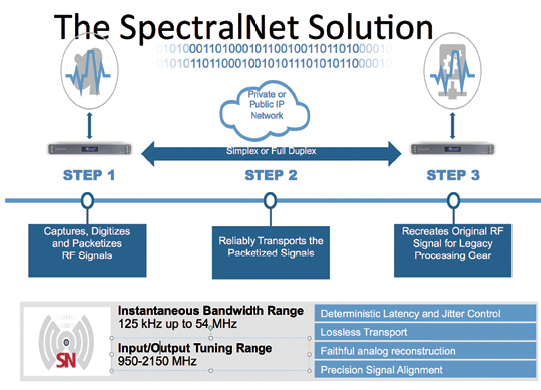
Figure 1. Bridging analog IF/RF with IP networks using SpectralNet.
Using specialized techniques, Packetized IF can move digitized spectrum deterministically anywhere over an IP network, and reconstruct it at the destination so it can be processed by either digital or analog equipment. The specialized techniques achieve this with minimal added latency and no lost data all while being agnostic to the spectral content. As IP network protocols provide neither deterministic data transport nor minimal latency, the implementation of Packetized IF required several innovations to achieve these objectives.
Overcoming The Limitations Of TCP/IP
IP networks use the Internet protocol stack to isolate the users of the network from the physical details of data transport. Data is grouped into packets (typically 1500 bytes long). Because of network congestion, traffic load balancing, or other unpredictable network behavior, IP packets can be lost, duplicated, or delivered out of order.
The TCP Internet protocol achieves reliable transport in the face of these errors by requiring that the receiver acknowledge correct or failed packet receipts. This additional reliability, however, comes at a heavy price in network efficiency.
When network transport is unreliable, such as over long-haul shared WAN links, TCP/IP can perform excessive retransmissions and acknowledgements, making latencies high and unpredictable. If error density and latency gets too high, a phenomenon called “NACK implosion” can occur, where effective throughput crashes due to excessive retransmissions.
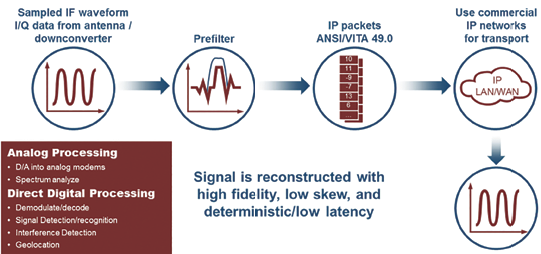
Figure 2. Packetized IF decouples transport and processing from receive/transmit.
These factors make TCP/IP unsuitable for the deterministic, low-latency transport requirements of Packetized IF. In contrast, the User Datagram Protocol (UDP), which provides low-overhead and latency but unreliable packet transport, is a more effective foundation for IF transport, so long as occasional packet losses and out-of-order delivery can be overcome.
To enable accurate regeneration of the analog spectrum at the destination, Packetized IF schemes must overcome the packet loss problem. Traditional Forward Error Correction (FEC) codes, such as Reed-Solomon codes, provide no protection against IP data loss. If a bit error occurs within a packet, the IP checksum fails and the entire packet is lost, providing no opportunity for the user’s FEC algorithm to repair it.
As a result, error correction must be performed at the packet level. RT Logic has implemented an algorithm within SpectralNet called Packet Forward Error Correction (P-FEC) that treats successive packets in a digital IF data stream as data elements subject to loss/repair. If a packet is lost, the error-correcting code information available in nearby packets allows the reconstruction of the lost data, just as a traditional error-correction code can reconstruct lost bits from nearby encoded received bits. This allows the P-FEC method to improve effective data rate greatly over straight UDP, without incurring the two-way traffic impacts and high latency associated with TCP/IP protocol.
SpectralNet’s P-FEC algorithm has operationally proven that lossless, low-latency transport of Packetized IF data is feasible even in the presence of severe burst packet losses.
Deterministic latency is another key requirement needed for the accurate regeneration of the analog spectrum at the destination end. SpectralNet leverages precision time references at either end of the link as well as data handling algorithms to ensure accurate time-release of data to its output D/A converters. This allows modulation and coding schemes that rely on precise timing, such as TDMA and frequency-hopping waveforms, to be correctly processed after WAN transport.
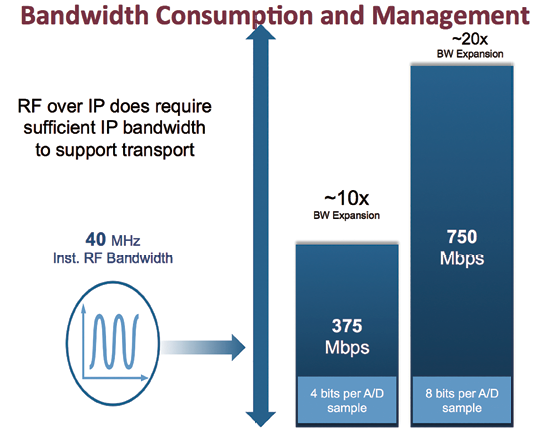
Figure 3. Network throughput can be adapted based on individual needs.
IP Network Throughput
Even in modern networks, data throughput is a precious resource. Due to Nyquist Theorem, any A/D sampling process used to capture and digitize an input RF source requires minimal network throughput to achieve sufficient data transport and spectrum regeneration. The amount of required network throughput is directly related to the A/D sampling rate used (dictated by the instantaneous RF capture bandwidth), and the amount of sampling resolution in the number of sample bits per A/D sample. This relationship is shown in Figure 3 on the previous page. As seen in the figure, a 10-20x factor is applied to the capture bandwidth in MHz when determining the resulting network throughput requirements in Mbps.
To help minimize the impact of its network loading SpectralNet includes technology that allows the desired signal center frequency and instantaneous capture bandwidth to be sub-band tuned from the input RF spectrum source so that no unneeded data (i.e., unoccupied noise floor region) is sent over the network. This spectral channel capability also allows multiple signals of interest to be selectively tuned and distributed to different destinations for either digital or analog processing. The bit resolution setting of the A/D sampler is also adjustable from 4-12 bits to optimize the network loading while preserving signal integrity for modem processing.
Applications Of Packetized IF
SpectralNet introduces a paradigm shift in the operations, maintenance, security, and logistics associated with managing ground segment missions.
The use of IP network transport and reconstruction of any waveform brings fundamental changes to overall architectures for antenna facilities, operations centers, and the communications network ground segment enterprise as a whole.
As shown in Figure 4 on the previous page and highlighted in the following paragraphs, these changes permit major paradigm shifts in the operations, maintenance, security, and logistics associated with managing ground segment missions. The application of Packetized IF can enable many high-value use cases that can minimize costs, maximize operational efficiency and flexibility, and generate additional revenues.
Centralization To Simplify Operations + Lower Costs
The SpectralNet technology enables RF data from an antenna at any location to be digitized, transported to, and faithfully reconstructed at a centralized operations facility. This enables teleport and satellite operators to centralize processing and operations (Communications and/or TT&C).
One example is how the technology enables significant reduction in required equipment at a ground antenna site. This can greatly reduce facility, personnel, and equipment spares costs, especially for ground sites at austere or remote locations, as shown in Figure 5 below.
In addition to lifecycle cost-savings achieved through equipment and personnel reduction, SpectralNet also enables centralization of expensive commercial, EAR-restricted or sensitive cryptographic equipment and software, thus improving overall risk posture and allowing lower protection-level security approaches to be used at teleport sites.
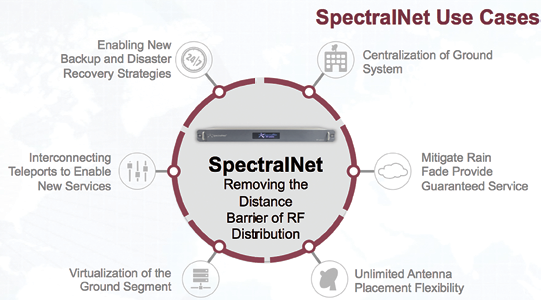
Figure 4. Packetized IF opens many new applications in the ground segment.
Moving ground modems/hubs and other processing equipment away from the antennas allows this equipment to be shared among multiple antennas and allows multiple ground sites to work with the same data.
SpectralNet can be used to extend the capabilities of VSAT Hub equipment to new markets at very low costs. To enter a new market, the VSAT provider only needs to provision or lease a new antenna in the market of interest and then connect the hub and antenna through SpectralNet. This saves the cost of new hub equipment and the cost of managing a new site.
This data architecture improves resilience of the enterprise in the event of a site failure, adversary action, rain fades, or test activities. Since the site footprint is smaller and non-sensitive, it becomes much simpler to provision new teleport locations to support regional surges or changing mission needs.
Effective Rain Fade Mitigation
SpectralNet enables users of high frequency satellites (Ka-/Ku-) to mitigate rain fade concerns by now being able to geographically disperse two smaller, low-cost antennas with SpectralNet and then transport the Digitized RF signal to a central facility equipped with a SpectralNet unit.
The SpectralNet at the central facility then precisely aligns the data from the two sources and makes a best source selection. The best source is then converted back to RF and fed to the downstream equipment.
SpectralNet can seamlessly switch between sources with very minimal data loss to the downstream equipment, ensuring modems remain locked and services remain active.
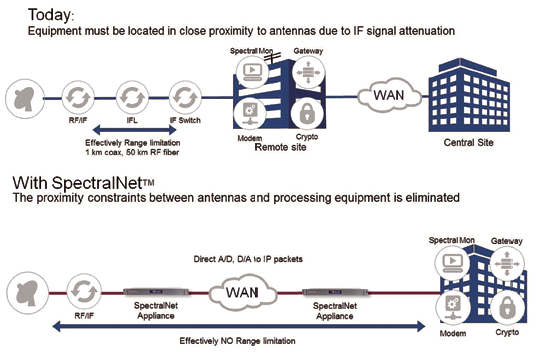
Figure 5. Packetized IF reduces needed equipment footprint at ground sites. Image courtesy of RT Logic.
Unlimited Antenna Placement Flexibility to Lower Costs + Space Requirements While Enabling Revenue
With SpectralNet, antennas are now freed from the constraints of being located near processing equipment. Antennas can now be placed at the optimal location based on costs, real estate availability, and signal reception. SpectralNet thus enables the reuse or sale of high-value property that is currently required to provision antennas. With SpectralNet, antennas can be relocated to lower value property or consolidated at a local teleport freeing up valuable real estate to other uses or sale.
Backup + Disaster Recovery To Meet Stringent SLA Requirements
SpectralNet provides teleport operators or content originators with new options to provide backup and path diversity options to meet stringent SLA requirements. SpectralNet digitizes and provides lossless transport of RF across public or private IP networks and reconstructs the RF for ingest by standard processing systems. This adds multiple new options for managing back-up and disaster recovery scenarios.
Lower The Cost + Impact Of Maintenance Operations
SpectralNet provides antenna operators new options to manage maintenance operations. When an antenna is down for maintenance, its reception responsibilities can be shifted to a backup antenna at any location. The received RF can be digitized and transported by SpectralNet to original antenna processing equipment. This greatly simplifies the scheduling and execution of maintenance operations.
Flexibility In The Location Of Customer Premise Equipment Or Specialized Processing Equipment To Enable New Services For Network Customers
SpectralNet enables your network to be extended without the need to provision or locate processing hardware in new geographical areas. Services provided by expensive processing equipment can be extended to a new geographical area by simply transporting the RF signal to a new antenna in the new area of service. Customer premise equipment can remain with the customer shortening the time required to provision new services.
Virtualization Of The Processing Portion Of The Ground Segment To Lower Costs + Increase Operational Flexibility
SpectralNet is a key enabler for software modem and virtualized ground processing and brings RF data into the IP network environment. RF data can be processed using much less expensive, more flexible, software-based methods. For example, a purely software-based modem application becomes feasible, where modulation, coding and framing algorithms are performed using commodity server hardware in a centralized cloud processing center.
If the modem algorithms are changed, no equipment changes are required at the ground antenna site, and software-only modifications to the modem application can adapt to the changes within a virtualized processing environment. This allows lower overall cost and flexibility in reusing the ground equipment as space platforms and waveforms change.
RT Logic has demonstrated a completely software-implemented modem that supports symbol rates in excess of 10 Msym/sec in a standard Linux server environment. The use of digital data and software-defined processing also allow multiple functions to be performed on the same data. For example, a spectral monitoring application, channel simulator, or a channel/transponder characterization program can be run to ingest the digital IP data in parallel with normal processing without requiring special-purpose hardware.
Spectral Record/Playback
The ability for Packetized IF systems to record and playback raw I/Q data has several uses in both test and operations. During system test, recorded IF data can be used to provide repeatable test cases for integration, test, and verification of the communications paths between a satellite bus (such as in a high-bay) and the ground processing equipment.
Coupled with IP data transport, this allows the high-bay and ground equipment to be physically separate from each other while still permitting end-to-end testing. After launch, the recorded IF data can be used to assist early on-orbit test and to provide trusted regression test cases for verification of new versions of ground software.
An IF recorder can also be used as an online ‘black-box’ recorder. Like an airliner’s black-box recorder, such a system continuously records link IF data during normal operations, retaining a rolling window (such as the last few hours) of data on disk. In the event of an anomaly or on-orbit event, the data is then retrieved to allow detailed analysis and troubleshooting.
For cases where problems occur rarely or under unusual conditions, such a black-box recorder greatly improves the ability of system engineering experts to diagnose and fix issues. For LEO satellite systems, the black-box recorder allows recovery from downstream processing errors, such as those due to incorrectly configured ground equipment or operator error. After the missed contact, the IF data is played back into the ground string to recover data that would have previously been lost to the contact failure.
The Benefits
The ability to perform digital conversion, IP network transport, and reconstruction of any waveform brings significant benefits to the satellite ground communities for both commercial and government applications. These benefits include lower costs, more flexible software-based processing, improved resilience, improved test and troubleshooting, and reduced vulnerability at remote ground sites. Sustained IP transport at up to 40 MHz instantaneous bandwidth has been operationally proven (TRL 9) and is currently available commercially. This capability can provide zero packet-loss, deterministic latency, and spectral reconstruction even over severely impaired wide-area networks. RT Logic’s internal investments are increasing both the achievable bandwidth and the processing capabilities of digital IF.
www.kratosdefense.com/
www.rtlogic.com/
For more than 30 years Kratos has been the acknowledged leader in the development and integration of ground segment solutions that are key to providing secure management, delivery and distribution of data and information from space and terrestrial-based platforms into networks for defense, intelligence, government and commercial satellite and communication service provider partners.
Kratos offers turnkey enterprise-grade ground system solutions encompassing Command & Control, integrated RF management solutions, including signal monitoring, geolocation and mitigation; satellite and terrestrial communications, network monitoring and control, service quality management and a broad array of sophisticated, yet cost effective, antennas. Kratos products and services are used by more than 75 percent of the world’s commercial satellite operators and 90 percent of US-based space missions.
RT Logic, a Kratos subsidiary, is the leading supplier of ground-based equipment for space/ground communications. SAT Corporation, also a Kratos subsidiary, is the leading provider of RF management solutions.

